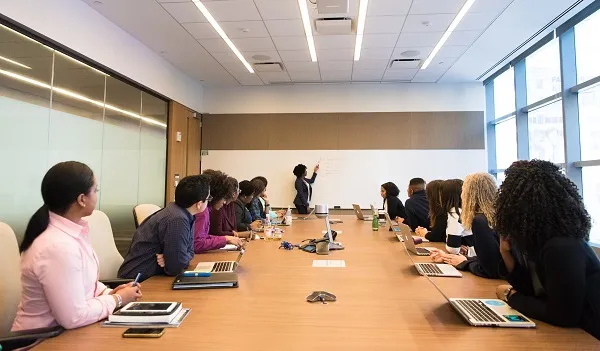
Majority of Singaporean workers say no to ‘normal'
Workers eager for ongoing flexibility and a focus on personal well-being in the post-COVID workplace.
Nine in ten Singapore workers are against a return to ‘normal’ working life, according to a new study released today by Skillsoft. Based on a survey of 886 workers or people looking for work across Singapore, Skillsoft’s report examined employee expectations in a post-COVID workplace and found that 90% want at least one COVID-19 practice adopted permanently in their day-to-day lives.
On average only 10% are happy to return to how things were, with this figure even lower among workers aged 25-44 with 7%.
The top practices that Singapore workers want to see introduced permanently are working from home with 68% and flexibility in working hours with 61%.
Furthermore, one in two want to see a reduction in unnecessary work meetings as well as more time spent on their physical and mental well-being with 49%. More than one in three also hope for more online learning and professional development opportunities.
The study further showed that Singapore’s workforce appears more concerned about their own well-being at this time, ranking job security and health and safety both with 26% as the joint number 1 issues that workers feel business leaders should be prioritising.
Meanwhile, 6 in 10 workers all rank health and safety, job security got 58%, and
work/life balance received 57% within the top three issues to be prioritised. Only one in ten rank innovation among their top three issues to be prioritised by business leaders.
The report also showed the top two issues the Singapore workforce wants their employers to support the most are offering flexible work for parents of both genders with 44% whilst hiring and supporting more older workers received 42%. Interestingly, more men than women want employers to support equal maternity and paternity leave.
Other important issues for Singapore’s workforce include providing more learning and development around racial diversity with 29%, ensuring equal gender representation on the leadership team with 24%, whilst monitoring, reporting, and working to close the gender pay gap received 22%.


![SBR 5 Lorem Ipsum News 2 [8 May]](https://cmg-qa.s3.ap-southeast-1.amazonaws.com/s3fs-public/styles/exclusive_featured_article/public/2025-05/a_hand_pointing_to_a_futuristic_technology_5b87c9d0e3_3.png.webp?itok=M3Hf-9XR)
![SBR 4 Lorem Ipsum [8 May Top Stories]](https://cmg-qa.s3.ap-southeast-1.amazonaws.com/s3fs-public/styles/exclusive_featured_article/public/2025-05/a_hand_pointing_to_a_futuristic_technology_5b87c9d0e3_2.png.webp?itok=2m5Wl0MX)


![Exclusive three SBR 12 Lorem Ipsum [8 May]](https://cmg-qa.s3.ap-southeast-1.amazonaws.com/s3fs-public/styles/exclusive_featured_article/public/2025-05/a_hand_pointing_to_a_futuristic_technology_5b87c9d0e3_11.png.webp?itok=8kn_UIfA)
![SBR 3 Lorem Ipsum [ Exclusive 2]](https://cmg-qa.s3.ap-southeast-1.amazonaws.com/s3fs-public/styles/exclusive_featured_article/public/2025-05/a_hand_pointing_to_a_futuristic_technology_5b87c9d0e3_1.png.webp?itok=YCyjLegJ)
![SBR 2 Lorem Ipsum [8 May]](https://cmg-qa.s3.ap-southeast-1.amazonaws.com/s3fs-public/styles/exclusive_featured_article/public/2025-05/a_hand_pointing_to_a_futuristic_technology_5b87c9d0e3_0.png.webp?itok=_cKD-29o)

![Video [Event News]](https://cmg-qa.s3.ap-southeast-1.amazonaws.com/s3fs-public/styles/event_news_featured_article/public/2025-05/screenshot-2025-05-08-at-4.58.53-pm_0.png.webp?itok=Kud35sMs)
![Event News SBR 9 Lorem Ipsum [8 may]](https://cmg-qa.s3.ap-southeast-1.amazonaws.com/s3fs-public/styles/event_news_thumbnail/public/2025-05/a_hand_pointing_to_a_futuristic_technology_5b87c9d0e3_8.png.webp?itok=DTh_dbYp)
![Event News SBR 9 Lorem Ipsum [8 May]](https://cmg-qa.s3.ap-southeast-1.amazonaws.com/s3fs-public/styles/event_news_thumbnail/public/2025-05/a_hand_pointing_to_a_futuristic_technology_5b87c9d0e3_7.png.webp?itok=vzDAzb6V)
![Event News SBR 8 Lorem Ipsum [8 May]](https://cmg-qa.s3.ap-southeast-1.amazonaws.com/s3fs-public/styles/event_news_thumbnail/public/2025-05/a_hand_pointing_to_a_futuristic_technology_5b87c9d0e3_6.png.webp?itok=jvHFc4P6)
![Video [Event News]](https://cmg-qa.s3.ap-southeast-1.amazonaws.com/s3fs-public/styles/video_thumbnail/public/2025-05/screenshot-2025-05-08-at-4.58.53-pm_0.png.webp?itok=yZnI0YBb)
![Video 1 SBR [8 May]](https://cmg-qa.s3.ap-southeast-1.amazonaws.com/s3fs-public/styles/video_thumbnail/public/2025-05/screenshot-2025-05-08-at-4.58.53-pm.png.webp?itok=9AAeRz_k)

 Advertise
Advertise

